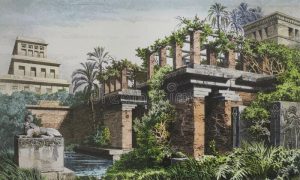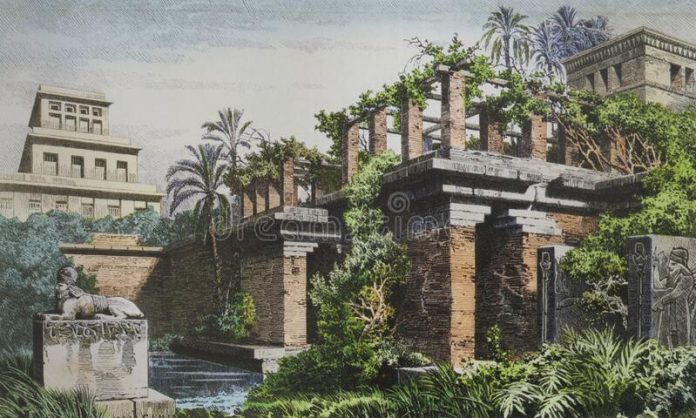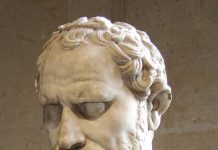Thucydides, pondering the early days of Greece, suggested that in the past everyone lived as barbarians did in his day. He and other writers “shared an underlying assumption that urbanization was a sign of civilizational progress.” So writes author Greg Woolf in his book on ancient cities, and the same underlying assumption holds true today. One need only look at the electoral map of the 2020 US election to see that those in urban areas voted for the pro-science and pro-democracy presidential candidate, whilst those in rural areas voted for the anti-science and anti-democracy candidate. The age-old effort to tame – or destroy – barbarians is still with us in the 21st century. Only now the stakes are higher.
Anyone contemplating a read of this book by Woolf (Director of the Institute of Classical Studies, Univ. of London) should first read a February 2020 book by Chicago mayor Rahm Emanuel, The Nation City. I quote here from a review of that book by David Runciman (London Review of Books, 18 June 2020). “Rome has been governed as a city for nearly three thousand years. We have nation states for barely 400 years. Cities, for all their obvious artificiality, are more natural-seeming than nation-states. Nations are only ever imagined communities. Cities, Emanuel suggests, are real ones.” I suggest his book not because I subscribe to all his views, but to offer the reader a thoroughly modern perspective on the role of the city.
Woolf identifies what he terms a “fundamental point” of difference between city and rural life. “Cities have that organic solidarity based on the cooperation of those with complimentary skills. Villages have a mechanical solidarity based on cooperation between agriculturalists with similar values and similar skills. It follows that cities are not just places: they are the most visible physical manifestations of deeper and wider changes in society.”
The size of cities in ancient times was miniscule compared to what we have now. Woolf states of the 200,000 cities in the Roman Empire, some 75% of them had fewer than 5,000 inhabitants. What was then a city is now merely a small town. Only Rome itself reached a level of one million people, about the population of Tucson.
The first portion of the book is attended by arguments that range from weak to contentious. In trying to identify why humans developed bigger brains than other primates, he latches on to the so-called “social brain hypothesis” developed by Dunbar, Gable and Gowlett as elucidated in a 2010 book by those authors. Before the reader accepts this hypothesis, I suggest studying a review article in Frontiers of Physiology (2012) by Lihoreau, Latty and Chittka, who recommend we “should focus on brain functions and identify neural circuitry correlates of social tasks, not only brain sizes.” By delving into evolutionary matters, Gregory casts the net of his study too widely, as can be seen in this somewhat purple prose: “Finally those big brains- for which we gave up our claws – learned to cook, and accepted the burden of looking after children.”
On the subject of village sizes (which remained the largest kind of settlement for 2,000 years before cities began), he also adopts a sociological paradigm without offering any textual reference (or even Index entry) that might give the reader some support when he states “The population of each village was usually less than the Dunbar number, the supposed maximum number of individuals with which each of us can maintain individual social relations.” (FYI: it derives from work in the 1990s by evolutionary psychologist Robin Dunbar, and whether it correlates with the thoughts of ancient peoples is open to question).
Topics covered in the book are very broad, including knowledge of how to cultivate olives and vines, temple architecture across various cities (which “looks a little like an arms race” as they vied for bigger and better ones), the rise of hoplites, the creation of civic constitutions, etc. I do not see any Index entries for sanitation; certainly, dealing with garbage, sewage and associated pestilence was a major problem. Plague is dealt with in a single paragraph.
Geographical areas considered are broad, but not comprehensive. While Cyprus is mentioned (the copper-producing island of the Bronze Age), Malta is skipped over entirely. Gregory tantalizes us with the information that “We still have texts of speeches celebrating Rome, Corinth and Athens, and a great mass of poetry on the merits of different cities.” Except for an excerpt from the Epic of Gilgamesh, a short passage from Hesiod’s Works and Days, 7 lines from Virgil and 10 lines from Homer’s Iliad, the ancient voices themselves remain mute in this book.
Occasionally the author does offer us some passages to remember. “Ruined cities are among the most evocative traces of the ancient world. What we see is the hard matter: the skeletons of dinosaurs, not their flesh. For much of antiquity cities were soft-shelled boneless organisms, communities of souls that were born, grew old, and died without leaving fossils of stone and brick. For just a few centuries around the turn of the millennia their inhabitants devoted huge amounts of energy to building monuments they hoped would last forever.”
The book contains numerous typos. Pg. 25: “who believe”, not “who belief; pg. 62: “thought”, not “though”; pg. 65: “or another”, not “of another”; pg. 120: “cases” not “case”; pg. 179: “were by no means”, not “were no means”; pg. 311: “Amarna” not “Amana”.
For all its faults, this is a fine single-volume study of the ebb and flow of the European civilisations that built cities both large and small. The 40-page bibliography encourages the avid student of history to read more about the enduring origin, growth and fall of ancient cities.
The Life and Death of Ancient Cities (a large 499 pages) is $32.95 by Oxford Univ. Press.














